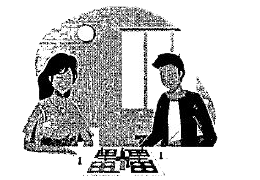Sherlin and Danju are playing Ludo at home during Covid-19. While rolling the dice, Sherlin's sigter Raji observed and noted the possible outcomes of the throw every time belongs to set {1, 2, 3, 4, 5, 6). Let A be the set of players while B be the set of all possible outcomes.

Let R:B→B be defined by R = {(x, y): y is disivible by x} is :
Reflexive and transitive but not symmetric
Reflexive and symmetric and not transitive
Not reflexive but symmetric and transitive
Equivalence
The correct Answer is:A
Related Playlists
- BOOK - ICSECHAPTER - RELATIONS AND FUNCTIONS EXERCISE - MULTIPLE CHOICE QUESTIONS (ASSERTION AND REASON BASED QUESTIONS)7videos
RELATIONS AND FUNCTIONS
- BOOK - ICSECHAPTER - QUESTION PAPER-2018EXERCISE - Section -C8videos
QUESTION PAPER-2018
- BOOK - ICSECHAPTER - SAMPLE PAPER - 4 EXERCISE - Questions (Section C)8videos
SAMPLE PAPER - 4
Similar Practice Problems
- Question 1 - Select One
Set of all possible outcomes of an experiment is called its
Auniversal setBsample spaceCpartitionDdomain - Question 1 - Select One
Let Z be the set of all integers and let R be a relation on Z defined by a R b⇔ (a-b) is divisible by 3. then R is
AReflexive and symmetric but transitiveBReflexive and transitive but not symmetricCsymmetric and transitive but not reflexiveDAn equivalence relation - Question 1 - Select One
Let A be the set of human beings in a town at a particular time.A relation R on set A is defined as R = { (x,y): x is younger than y } . Then R is
Areflexive symmetric but not transitive.Bsymmetric transitive but not reflexiveCan equivalence relationDneither reflexive nor symmetric nor transitive . - Question 1 - Select One
Let Z be the set of all integers and let R be a relation on Z defined by aRb⇔(a−b) is divisible by 3. then .R is
AReflexive and symmetric but transitiveBReflexive and transitive but not symmetricCsymmetric and transitive but not reflexiveDAn equivalence relation
Similar Questions
Sherlin and Danju are playing Ludo at home during Covid-19. While rolling the dice, Sherlin’s sister Raji observed and noted the possible outcomes of the throw every time belongs to set {1,2,3,4,5,6}. Let A be the set of players while B be the set of all possible outcomes.

A = {S, D}, B = {1,2,3,4,5,6}
Let R:B→B be defined by R={(x,y):y in divisible by x} isView SolutionSherlin and Danju are playing Ludo at home during Covid-19. While rolling the dice, Sherlin’s sister Raji observed and noted the possible outcomes of the throw every time belongs to set {1,2,3,4,5,6}. Let A be the set of players while B be the set of all possible outcomes.

A = {S, D}, B = {1,2,3,4,5,6}
Let R:B→B be defined by R={(1,1),(1,2), (2,2), (3,3), (4,4), (5,5),(6,6)}, then R isView SolutionSherlin and Danju are playing Ludo at home during Covid-19. While rolling the dice, Sherlin’s sister Raji observed and noted the possible outcomes of the throw every time belongs to set {1,2,3,4,5,6}. Let A be the set of players while B be the set of all possible outcomes.

A = {S, D}, B = {1,2,3,4,5,6}
Let R be a relation on B defined by R = {(1,2), (2,2), (1,3), (3,4), (3,1), (4,3), (5,5)}. Then R isView SolutionSherlin and Danju are playing Ludo at home during Covid-19. While rolling the dice, Sherlin’s sister Raji observed and noted the possible outcomes of the throw every time belongs to set {1,2,3,4,5,6}. Let A be the set of players while B be the set of all possible outcomes.

A = {S, D}, B = {1,2,3,4,5,6}
Raji wants to know the number of relations possible from A to B. How many numbers of relations are possible?View SolutionSherlin and Danju are playing Ludo at home during Covid-19. While rolling the dice, Sherlin’s sister Raji observed and noted the possible outcomes of the throw every time belongs to set {1,2,3,4,5,6}. Let A be the set of players while B be the set of all possible outcomes.

A = {S, D}, B = {1,2,3,4,5,6}
Raji wants to know the number of functions from A to B. How many number of functions are possible?View SolutionWhen a dice is rolled, what are all the possible outcomes?
View Solution

